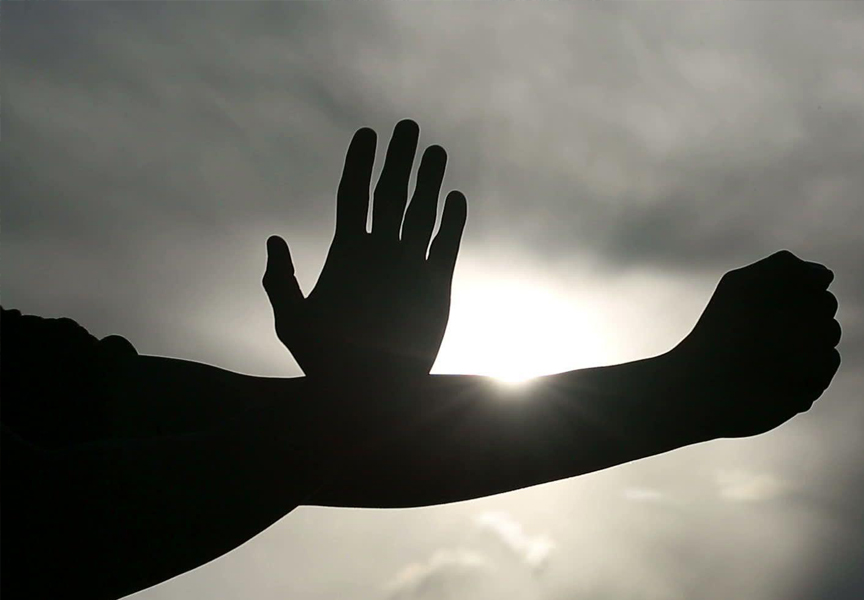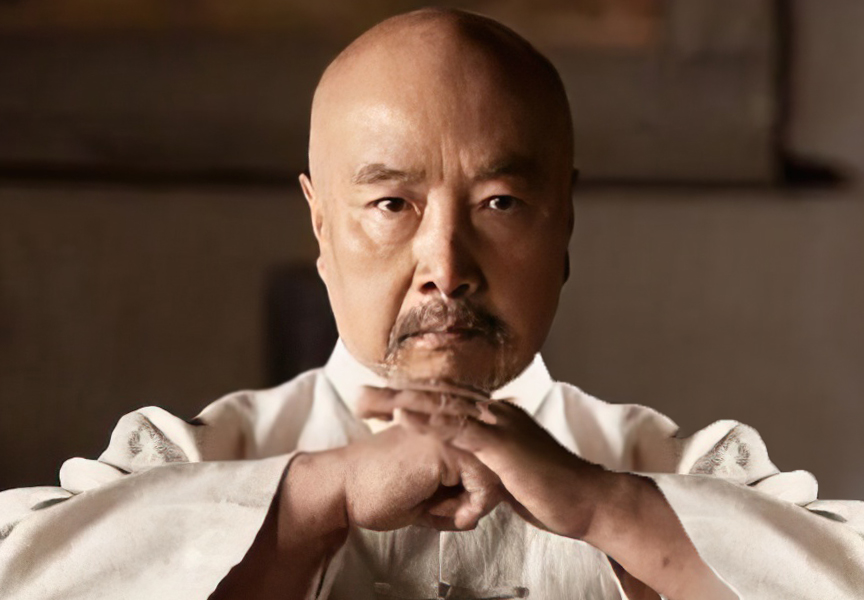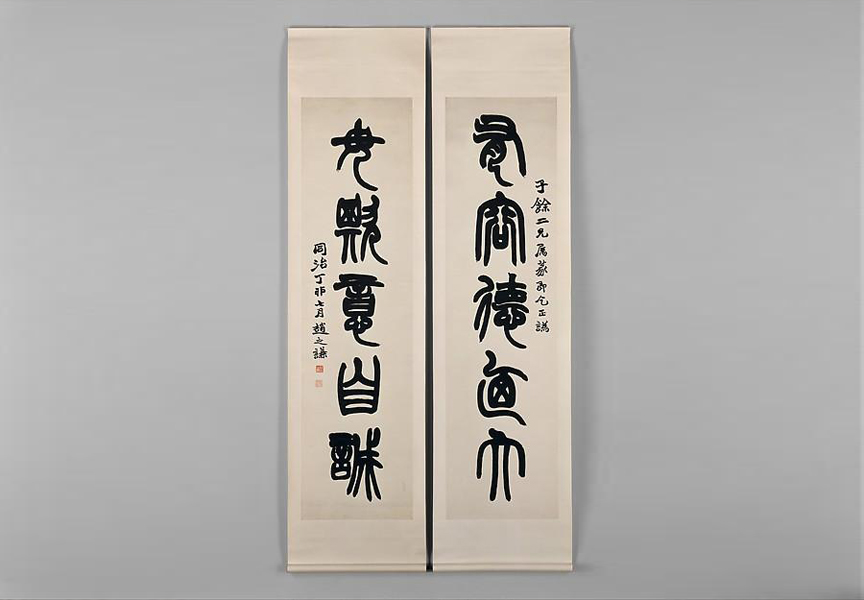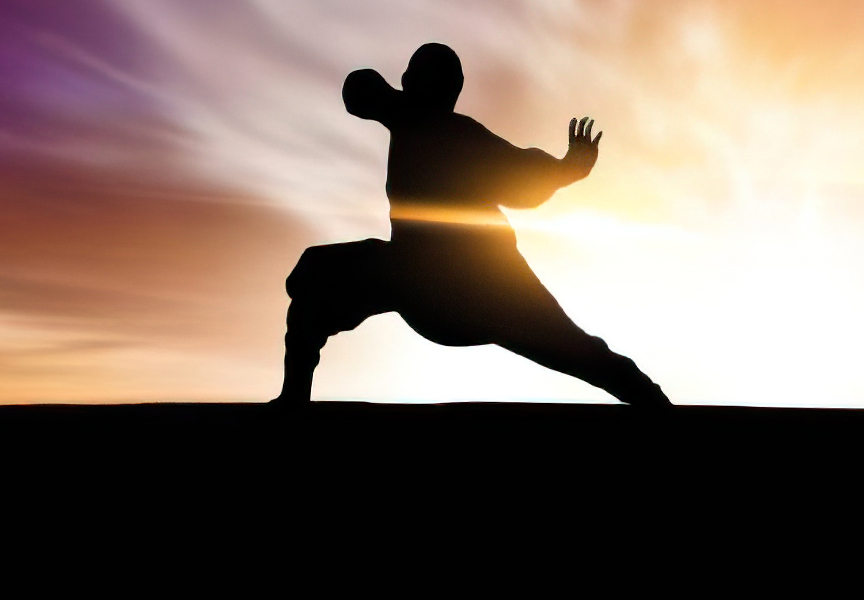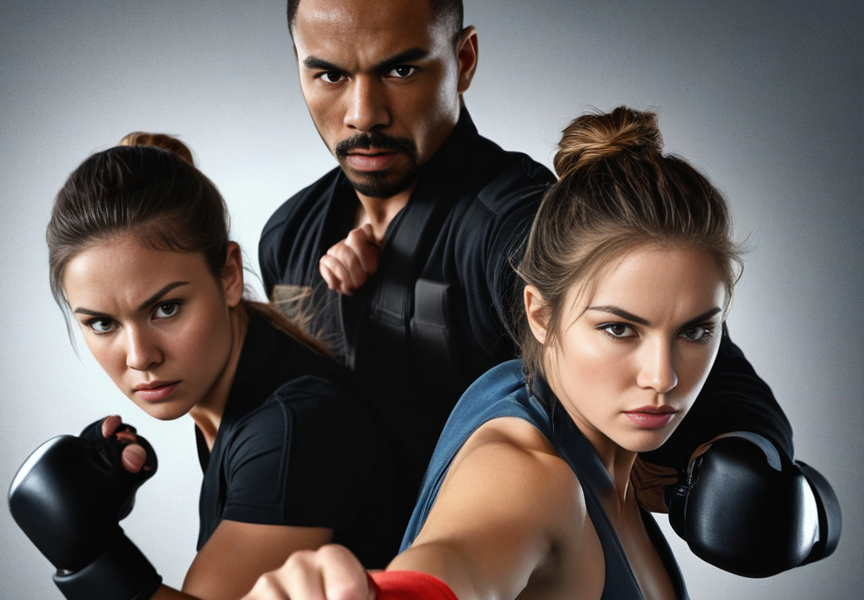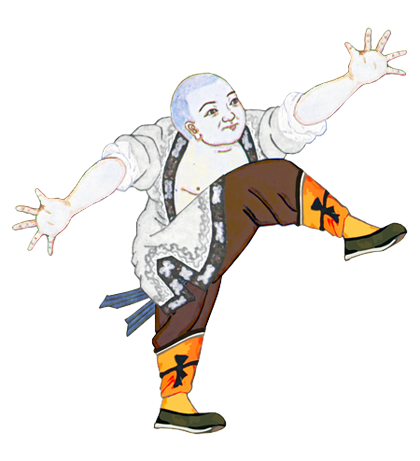Shaolin Gong Fu is a broad and profound self cultivating system, combining martial arts and Chan in a unique way. Not only does it comprise of hard moves and techniques but also techniques of soft and internal moves. Essentially, there is no clear distinction, since this is the purpose of self cultivation, so internal as external.
The hard lies in the soft, and the soft lies in the hard.
柔中之刚为真刚,刚中之柔为真柔
Róuzhōngzhīgāngwéizhēngāng, gāngzhōngzhīróuwéizhēnróu
Master Shi Yong Po [chin.: shìyǒngpō 释永坡 | 1926 - ]
Practicing Rou Quan, the “Soft Fist” [chin.: róuquán 柔拳] of Shaolin, we gain internal and external cultivation. Breathing strengthens the heart, while with soft exercise strengthens body’s energy, and therefore the martial art is interwoven with Chan as one. When Chan and the Martial Art become one [chin.: chánwǔ yītǐ 禅武一体] , then the true world, our true nature, is revealed. Setting off practice in Rou Quan, one can see the benefits in self defence, and the ease in which one can avoid an opponent. But this is a small fraction of Soft fist – Rou Quan. Its major benefit is that it empowers the body, cleanses the mind and the heart; while long-term practice, leads to improvement in overall health- maintained till old age, providing the sense of longevity.
Soft fist – Rou Quan of Shaolin as a whole is undivided, but for learning and educational purposes, it is split up in three categories, each one containing three basic elements.
First : Meditation, a) sitting mediation, b) accumulation, c) channeling.
Second : Soft Fist, a) Method, b) Application and use c) the form/routine
Third: Martial Art Chan
Ι) Meditation practice [chin.: chángōng 禅功]
Sitting still, calm and peaceful, with focused mind, we let ourselves free and enter in a spiritual condition called Gong Fu. Then the self and our nature calms down; mind, air and energy are cleansed, can sense the force emerge. The method, is not to be attached to any particular method.
a) Sitting meditation [chin.: zuòchán 坐禅]
We are sitting peacefully, relax the body, mind and breath. Observing the environment and focus until completely absorbed. Being centered in the practice we enter in a state of quietness and seclusion, which is the gentle nature of our True Self [chin.: xìngjìng 性静], having purity in our spirit [chin.: Shénqīng 神清]. This is the condition of Meditation’s Inner Peace [chin.: chándìng 禅定].
The deep breathing during meditation, not only does invigorate the mind, but exercises the internal organs and stimulates them. Practicing the spirit transforms the energy [chin.: liànjīnghuàqì 练精化气], practicing the energy transforms the essence [chin.: liànqìhuàshén 练气化神], practicing the essence leads to emptiness [chin.: liànshénháixū 练神还虚], practicing emptiness is the Way [chin.: liànxūhédào 练虚合道] entailing in the fact that, absolute emptiness is identical to form.
b) Channeling [chin.: zhànzhuāng 站桩]
Channeling, is the foundation, the base of martial arts. It goes without saying, that one is not practicing martial arts, unless one practices in such channeling that enables, the transfer of energy in Dan Tien [hin.: dāntián 丹田], converting it into buoyant force [chin.: fúlì 浮力], then into empty force [chin.: xūlì 虚力]. During inhalation-exhalation, one raises and lowers hands in a natural way, according to individual’s physique. The torso gains flexibility and one feels the potential of the infinite power produced. With the force focused in one point, it condenses allowing in this way a better understanding of the peaceful mind of meditation.
c) Power Transmission [chin.: fālì 发力]
It is about the practical ability based on the accumulated power that, combined with breathing, transforms and alters its external form. It is often met as Da Quan [chin.: dǎquán 打拳], movent – stillness – breathing. This force can be either good, bad and spiritual (??). Moreover, this force can be hard, soft, and both hard and soft at the same time, force with shaking, elastic force, force with vibration, accumulative force and penetrating force. Also there is fast force or speed force, that entails from coordination of the entire body internally and externally. Beyond the above characteristics will power/force also exists. It should be noted that there is no such thing as dead force, idle force or loose force.
Upon long term practice, only the external force, the centre of weight, the local definition and physical reflex can be comprehended. Still, only the internal and external coherence of all methods can make up immense strength.
ΙΙ) Soft fist [chin.: róuquán 柔拳]
For the efficient force-accomplishment via breathing; an extreme resourcefulness at transferring soft and hard power should take place during transferring of soft and hard energy.
a) The way [chin.: zhāofǎ 招法]
Jao Fa is a kind of exercise of specialized techniques. We could say it is a sum of exercises like the form, which essentially are practiced as in a real battle, where its primary aim needs to be studied. It must be practiced so skillfully and become unnoticed. It develops, a satisfactory level of consciousness in battle, with inventiveness in changes, fast pace, superb agility,
all in a devotional state beyond ego.
b)Application - Use [chin.: yùnyòng 运用]
The way that the moves are used, have more to do with the psychological state, than the training in the particular craft or some set certain abilities. The Shaolin Rou Quan practitioner is particularly flexible, so that naturally takes in all possible changes, chooses the battle type, realizes what changes in abilities are required, such as leg movement, distance changes, playing with force, regulating the breath, with total coordination, thoughtfulness but also playing with impulsive reaction. It is a magical transformation, of random change, that comes from the heart and is in harmony with the spirit.
c) The form/routine [chin.: lù 路]
The form/routine is a combination of a variety of moves. It gives the ability to the practitioner to perform a complete practice, to guide the breath and energy, to force oneself to remember the shape and flow of movements and pauses,
to tune in with the spirit, nature
and merge heart with fist.
Usually the movements are slow, soft and the body is soft, which is no wonder, but simply the reasoning behind the free blood flow along internal channels and meridians.
Explosive force has to do with heart.
There are clever techniques beneficial for martial arts, self defence and overall health.
ΙΙΙ) Chan and Martial Arts [chin.: yìchányìwǔ 亦禅亦武]
Martial arts is a form of concentration/meditation. It is the study of Chan. It is the key to the gate of Enlightenment. It is an act towards stillness.
It practices externally hand, eye, body and concentration.
It is centered in emptiness. Emptiness in the heart, emptiness of mind intention.
It is that sort of emptiness that expands in the universe upon fulfillment.
In both, the real movement, eirther in form or formless, comes from the same source and interacts as much in cause as in effect. They are fully interdependent. Chan exists within the Martial Art, and Martial art exists within Chan.
Excerpt from the Book
"Shaolin Wu Gong - The Martial Arts of Shaolin Temple "
VOLUME 1 | ISBN: 978-618-80566-3-3
Posted by Author's permission
